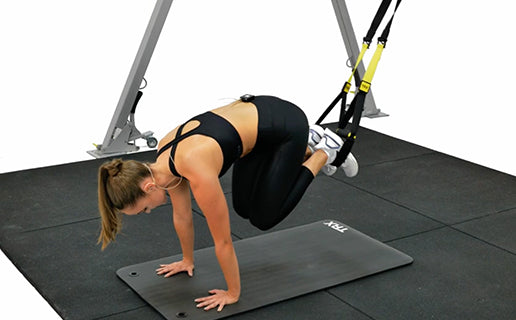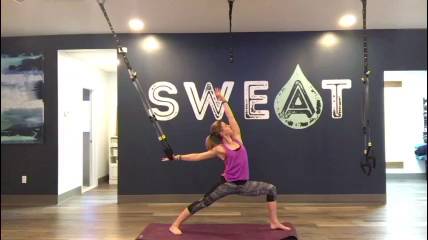
All kettlebells are not created equal.
It seems silly, right? A kettlebell is a ball of weight with a handle attached. It should be simple. But the best products come from repetitive testing and obsessive attention to detail. That’s exactly how TRX developed our Gravity Cast Kettlebells. That’s why we’re confident they’re the best kettlebells you can find.
What does “gravity cast” mean?
There are a lot of terms that can be attached to a product to make it sound more desirable. Organic! Fair trade! Artisanal! Handmade! With many of those terms, there’s a vague idea about what it means, but that idea becomes cloudy when you try to explain it.
Not so with “gravity cast.” Gravity casting is actually one of the oldest methods for fabricating metals and metal alloys.
In metal work, common manufacturing techniques include gravity casting, pressure casting, and forging. When you think of metal workers hammering at hot irons, you’re thinking of forging. Casting, in either of its forms, relies on a mold to create an object. Hot metal goes into the mold. After the metal has cooled and solidified, the mold is opened, and the object comes out. One advantage to casting, as opposed to forging, is that you end up with a very smooth surface.

That brings us to the two types of casting.
In pressure casting, a metal alloy is injected into a mold under high pressure, and that pressure is maintained until the metal becomes solid. It’s actually a pretty quick process, which makes pressure casting popular in manufacturing. (Faster completion means more products and more money.)
In gravity casting, molten metal is poured from above into a mold to form an object—in this case, a TRX Kettlebell—so the object it formed under the force of gravity. Gravity casting is a slower process than pressure casting; there’s less turbulence in the process and less air trapped in the casting. That makes for a stronger product in the long run.
Quality and Precision
TRX prefers gravity casting because quality and precision matter.
Ever grab your standard-weight dumbbell at the gym, only to say, “This doesn’t feel right.” Maybe you use 20s, but the weight you’re holding doesn’t feel like the 20-lb. weight you’re accustomed to throwing around. The reason is there’s a lot of opportunity for error in the manufacturing process. Gravity-casting, however, is more precise. Because TRX Gravity Cast Kettlebells are formed in the same mold, time after time, all of the kettlebells in a particular weight class are the same size and shape.
In other words, nothing about the TRX Kettlebell is accidental. Every detail is the result of careful decisions and a commitment to craftsmanship.

Functionally, what does that mean?
Maybe you don’t nerd out on metal fabrication. Maybe you’re more concerned with the practical question: How does a gravity cast kettlebell feel in my hands?
The answer? Pretty damn good.
Most kettlebell workouts include some kind of propulsion and weight shift, so the handle of the kettlebell will rotate inside your grip. Think about a kettlebell snatch or swing: The kettlebell moves as you move.
You may have seen kettlebells with a foam or rubber-coated handle; perhaps even a shiny finish. The problem with those options is the handle can pull or drag in your grip, slowing the kettlebell’s trajectory and leaving you with blisters. TRX Kettlebells, by contrast, have a powder-coated grip that glides without feeling slippery.
The gravity-casting process, combined with the powder-coated finish on TRX Kettlebells makes them incredibly smooth. And when you think about the ways that you exercise with a kettlebell, that smoothly-finished surface matters. The last thing you want is a rough edge or seam interfering with your workout.
(Fun fact: That perfectly-smooth finish is the characteristic that TRX customers most frequently rave about in our TRX Kettlebell reviews.

There aren’t a ton—pun intended—of options you can add to a kettlebell without interfering with its functionality, but our TRX Rubber Coated Kettlebells have all the features of our traditional gravity-cast kettlebells, plus a rubber-coated flat base. Rubber-coating on the base makes the kettlebell easier to handle in certain exercises, and easier to store.




